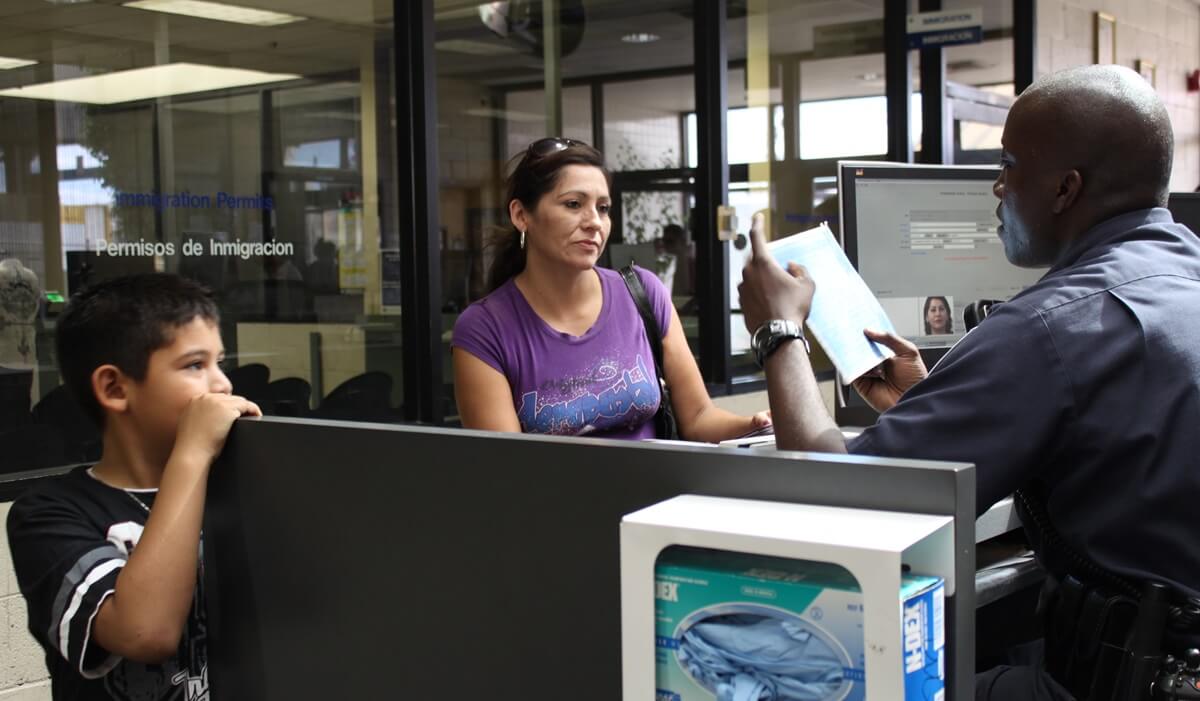
As a lawful permanent resident of the United States, your obligations for maintaining your immigration status are fairly simple. You need to notify USCIS within 10 days of moving and renew your green card every 10 years. International green card travel can introduce some new hazards.
Permanent residents are free to travel outside the United States, and temporary travel generally does not affect your permanent resident status. As the term “resident” suggests, your status comes with the expectation that you will live (make your home) in the U.S. If you spend too much time abroad, you could lose your right to a green card.
5 Tips for Permanent Residents Traveling Abroad
Before traveling outside the United States, it's important to understand there are certain risks. Understand how your absence affects your U.S. immigration status and how to deal with problems as they arise. Here are five tips to understand before traveling abroad:
Keep Up with Basic Green Card Maintenance
Permanent residents may be denied re-entry to the United States if they don't have valid, unexpired proof of status. It happens every day. When seeking to re-enter the United States after international green card travel, you will need to present a valid, unexpired green card at the port of entry. A U.S. Customs and Border Protection (CBP) officer will review your card and any other identity documents you present (e.g. passport, foreign national I.D. card, or U.S. driver’s license).
Unfortunately, many permanent residents forget or neglect to maintain their permanent resident cards. The simplest mistake is forgetting to renew a green card. Most green cards must be renewed every 10 years. If your green card needs to be renewed or replaced, use Form I-90, Application to Replace Permanent Resident Card. Plan early – the I-90 processing time can be lengthy to obtain a new card.
Some green cards do not expire. Because these cards were generally issued in the 1970's, older cards can contribute to another problem. Dated photos or damaged cards can make the CBP officer’s job difficult. Remember, re-entry at the U.S. port of entry is at the CBP officer’s discretion. If the officer can’t read the card because it is distorted or the photo is so old that you can’t be recognized, there is the possibility of being denied entry. It is your responsibility to ensure the card is legible and accurate.
In the case that you are allowed to re-enter the U.S. with an expired green card (if travel was less than one year), the officer may require you to pay a reentry fee on top of the green card renewal fee. This can get very expensive. What's more, it will create a significant delay and potentially other legal problems.
Understand Continuous Residence
As a permanent resident of the United States, you have the freedom to travel abroad. However, any trip longer than six months is presumed to disrupt your continuous residence requirement for the purposes of becoming a U.S. citizen. If you plan to naturalize as a U.S. citizen, Form N-400 (Application for Naturalization) requires you to document your international green card travel from the prior five years. Any absence from the United States that is six months or more in duration will create a problem.
The absence can break your continuous residence. Continuous residence means that the green card holder has actually lived in the United States and made it a home. For many people, making a life in the U.S. includes employment and building ties to the community. To naturalize, most applicants need five years of continuous residence. USCIS presumes that you disrupted this requirement if you have any trips of six months or more. It is not simple to overcome this presumption. One simple solution to prevent the problem is to shorten the duration of your trip to less than six months. But don't cut it too close. Remember that international travel delays could add another week to your trip. Learn more about continuous residence.
If your green card travel creates an absence from the U.S. for one year or more, you will definitely disrupt your continuous residence. But there is even a bigger risk with long absences.
Avoid Abandonment of Permanent Resident Status
Traveling abroad as a permanent resident for a period of one year or more will disrupt continuous residence. (There are some exceptions to the residence requirements for certain people such as those working for the U.S. government.) More importantly, you are potentially risking abandonment of your permanent resident status.
Lengthy trips put you under greater scrutiny for abandonment. When re-entering the United States, a CBP officer will likely interview you. If the officer determines that you did not intend to make the U.S. your permanent home at any point, that officer may determine that you abandoned your permanent resident status. Absences of one year or more will put you under increased scrutiny. But abandonment may be found to occur in shorter trips if the officer believes there's reason. Factors that may help you overcome this conclusion include evidence that you:
- Own a home or have a long-term lease in the U.S.;
- Continue to maintain U.S. employment;
- File U.S. income taxes;
- Have family and community ties in the United States; or
- Any other factors that help establish green card travel was temporary.
If you must make a trip abroad for a period of at least one year but no more than two years, it is highly recommended that you acquire a re-entry permit. In addition to serving as a valid entry document after long absences, re-entry permits provide evidence of your intent to return. You may apply for a re-entry permit by filing Form I-131, Application for Travel Document.
Navigating a Lost or Stolen Green Card While Abroad
In some cases you may have made all the proper arrangements but find that you don’t have a green card for re-entry. Each year, hundreds of travelers have their green cards lost or stolen.
If you've lost a green card outside the U.S., you'll need to obtain a special boarding foil to board a transportation carrier and re-enter the United States. File Form I-131A, Application for Carrier Documentation, in-person at the nearest U.S. embassy or consulate. Upon returning to the U.S., you must replace your lost or stolen green card by using Form I-90.
Avoid the Hassles – Apply for U.S. Citizenship
One of the great benefits of U.S. citizenship is the ability to travel with a U.S. passport. What’s more, you won’t have to worry about green card travel or re-entry permits.
It's probably less expensive than you think. In the long term, USCIS filing fees for naturalization are far less expensive that maintaining permanent resident status. Consider this: At the time of writing this article, the USCIS filing fees for green card renewal is $540 per renewal. Then, factor in an estimated 3 percent annual inflation rate and an average expected lifetime of 78 years. The typical 35-year old permanent resident will pay another $5,313 in green card renewal fees over their lifetime. These cost figures do not include additional fees that may be necessary to replace a lost, stolen, or damaged green card or legal fees associated with protecting permanent resident status. Generally, it’s more cost-effective to become a U.S. citizen. Check your eligibility for citizenship >>
Re-Entry to the United States Denied
If you are ever denied re-entry by a CBP officer, you do not have to accept the officer’s decision as final. You have the right to present your case in Immigration Court. Only an Immigration Judge has the authority to make a final decision about whether you abandoned your status. If you find yourself in removal proceedings, contact an experienced immigration attorney immediately.
About CitizenPath
CitizenPath provides simple, affordable, step-by-step guidance through USCIS immigration applications. Individuals, attorneys and non-profits use the service on desktop or mobile device to prepare immigration forms accurately, avoiding costly delays. CitizenPath allows users to try the service for free and provides a 100% money-back guarantee that USCIS will approve the application or petition. We provide support for the Application for Carrier Document (Form I-131A), Green Card Renewal (Form I-90), the Citizenship Application (Form N-400), and several other popular forms.
Want more immigration tips and how-to information for your family?
Sign up for CitizenPath’s FREE immigration newsletter and
SAVE 10%
on our immigration services








